How learning journeys help settings to capture the wonder of the early years and build a holistic picture of children’s development. By Wendy Howes, Jackie Wells and Sally Cave
Guildford Nursery School has a long tradition of documenting children’s learning, and while we use an online tracking tool (Di Chilvers’ Development Map), we have always maintained paper Learning Journeys, as we feel they are more accessible for children.
The children love looking at and sharing their Learning Journeys; it is their go-to book, especially when they are feeling less secure. However, we wondered about the purpose and audience of these written observations.
We wanted to ensure that our documentation of children’s learning and development reflected our Froebelian principles of ‘valuing the holistic nature of development and the uniqueness of every child’s capacity and potential’ (Flewitt R and Cowan K, 2020). We also wanted to make sure that our documentation was equally useful and meaningful to the children, the parents and the staff.
As a result, we now write everything to the child, which means so much more to the child, parent and, actually, the practitioner. We have also stopped writing short observations which offer little real insight into children’s learning and development. Our focus is now very much on quality rather than quantity.
CAPTURING LEARNING
Our learning stories are inspired by the work of New Zealand early years experts Dr Margaret Carr and Wendy Lee (see More information). The story captures what a child is doing in the moment; the key person briefly notes what they observe a child doing and, as accurately as possible, what they communicate about a child’s learning. There are usually photos to accompany or better illustrate the story, which is written after the observation as this allows the key person time to reflect on, analyse and interpret what they have observed. The child is the hero of their learning story.
Learning stories rely on professional curiosity, the ability to tune into the child, to know when to intervene and a deep understanding of child development. Most importantly, they are individual and personal to the child and, therefore, the family. Take the following example:
A birthday cake for a witch
‘We’re making a cake for the witch’s birthday,’ you said to me, F, as you played in the mud kitchen. ‘She lives in the sky and she has a very warm dress on. She looks a bit like an angel,’ you added. I wondered what you had put in the cake. ‘There’s lots of different things,’ you answered. ‘The recipe is called “Cake”. And you need to write the name because the witch won’t know whose cake it is. She might think it’s yours or mine so you need to write the name.’ I wondered where you were going to cook the cake, and you replied, ‘In the giant oven.’ ‘Guys, the icing’s ready,’ you said to your friends, adding it to the big bucket they had been moving. ‘Then we need to put it in the giant oven.’ The bucket was very heavy and you and your friends decided not to move it any further. ‘It’s all ready for the witch,’ you said.
What I noticed about your learning today
You were using your imagination today, F, to create a story about the witch and gave me a good description about where she was and how she looked. I liked your responses to my questions and that you knew you needed to follow a recipe. I wonder if you could write your recipe down for others to use? You also gave an explanation as to why you needed to write the name. Were you going to write it on top of the cake? You worked together with your friends and you were keen to share your ideas. I wonder if the witch enjoyed her birthday cake.
THE WHY AND HOW
Learning stories are made to be shared. They are a very effective way of connecting with parents. Who can resist a story about their child, especially when the process of learning is made evident?
A learning story really makes learning visible to the child. We read them aloud to the children. It is wonderful to see their responses when they realise that the story is all about them and what they were doing. This sharing of their story often supports and promotes further and deeper learning, as in the case of B (see box).
A HOLISTIC VIEW
It is important that learning stories provide a holistic view of the child. For instance, conflict and challenges can be recorded in a careful, thoughtful way. The story can be used for further discussion with parents and children about alternative ways of dealing with a variety of scenarios, supporting and developing self-regulation. For example:
Sharing cars
A, you have just started with us at nursery. Today, I could see that you were really interested in the cars that children were sending down the guttering. You were gathering them all up as they landed in the black tray.
Other children were then coming to get them to use them again. You were not happy about this! I could see how cross and frustrated you were getting. This is quite understandable as you are two years old and aren’t used to sharing with so many other children.
What I discovered about you today
A, you are finding out that sometimes we have to give other people some of the things that we want to play with or wait until someone else has finished with them. This is called sharing. There will be other times when you can have things all to yourself. Don’t worry, A, we will help you to do this; it can be a very tricky thing to learn! Today I demonstrated giving some of the cars to other children and allowed you to have some too so that you could all play the game together.
PRACTITIONERS’ VIEWS
As with any new approach, this form of learning story must be manageable for staff. We have found that once key people have had time to ‘play’ with this approach, they have found it very satisfying and less time-consuming than our previous methods of documenting children’s learning and development.
One staff member said, ‘Initially, it can be daunting to move away from a familiar style of recording observations. At first, I thought that a learning story had to be a significant moment and you can’t predict those which were causing anxiety. With experience, you begin to see the learning emerging and the child’s thought processes, knowing when to record them.
‘Some children will voice their thoughts for themselves, talking out loud about their activity, while others may respond to your ponderings or say nothing, leaving it for you to surmise what it was they might have been thinking.’
B’s big climbing challenge
At the beginning of this week, you set yourself the challenge of climbing on top of the tunnel and jumping off. L noticed that you were a little hesitant at first and offered you some support, which you happily accepted. L gave lots of verbal encouragement as you took on this challenge. You repeated this process a few times with L’s support. L noticed that you were really happy with yourself, as you had lots of smiles.
A few days later, you told me that you wanted to climb on top of the tunnel again and jump off. You asked if I would watch you do it. I watched as you attempted to climb up the side of the tunnel. After a few attempts you said that you couldn’t do it. I wondered if there was any other way that you could climb up on to the tunnel. You suggested climbing up the middle using the straps to pull yourself up. Again, after a few attempts you decided it was too tricky.
I love the way you didn’t get upset by the fact it was tricky; you just wanted to find another way to climb up. After this second attempt, I asked you if there would be any other way to climb up on to the tunnel. You had a little think and finally said, ‘I could use a ladder’!
You went in search of a ladder and carried it yourself all the way to the tunnel, even though you found it to be quite heavy. C helped you to put it on to the tunnel and you happily accepted his help. As soon as the ladder was secured, you climbed up the ladder and on to the tunnel. Without hesitation, you jumped off on to the mat. The look on your face was so special, B! You shouted, ‘I did it, I did it all by myself!’ You were so proud of yourself and I could see this by the expression on your face.
What I learned about you today
I noticed how you set yourself a big challenge to climb up, and persevered when things didn’t go your way. I think that you were assessing the risk all the time and wanted to be safe in your climbing.
You showed real resilience, which is one of the main reasons why you eventually achieved your climbing goal. I wonder what other challenges you will set yourself in nursery.
- MORE INFORMATION
- Flewitt R and Cowan K (2020) Guidance for Practitioners on Digital Documentation. Froebel Trust
- Tovey H (2020) Froebel’s Principles and Practice Today. Froebel Trust
- For more examples of our Learning Stories, please see our website: https://bit.ly/3polCqE
- www.developmentmap.co.uk
- Documentation of Learning Stories: A Powerful Assessment Tool for Early Childhood, https://bit.ly/38D2v6y
- https://famly.co/blog/management/what-sustained-shared-thinking-kathy-brodie
Wendy Howes is assistant head teacher, Jackie Wells is an Early Years Educator and Sally Cave is head teacher at Guildford Nursery School and Family Centre



